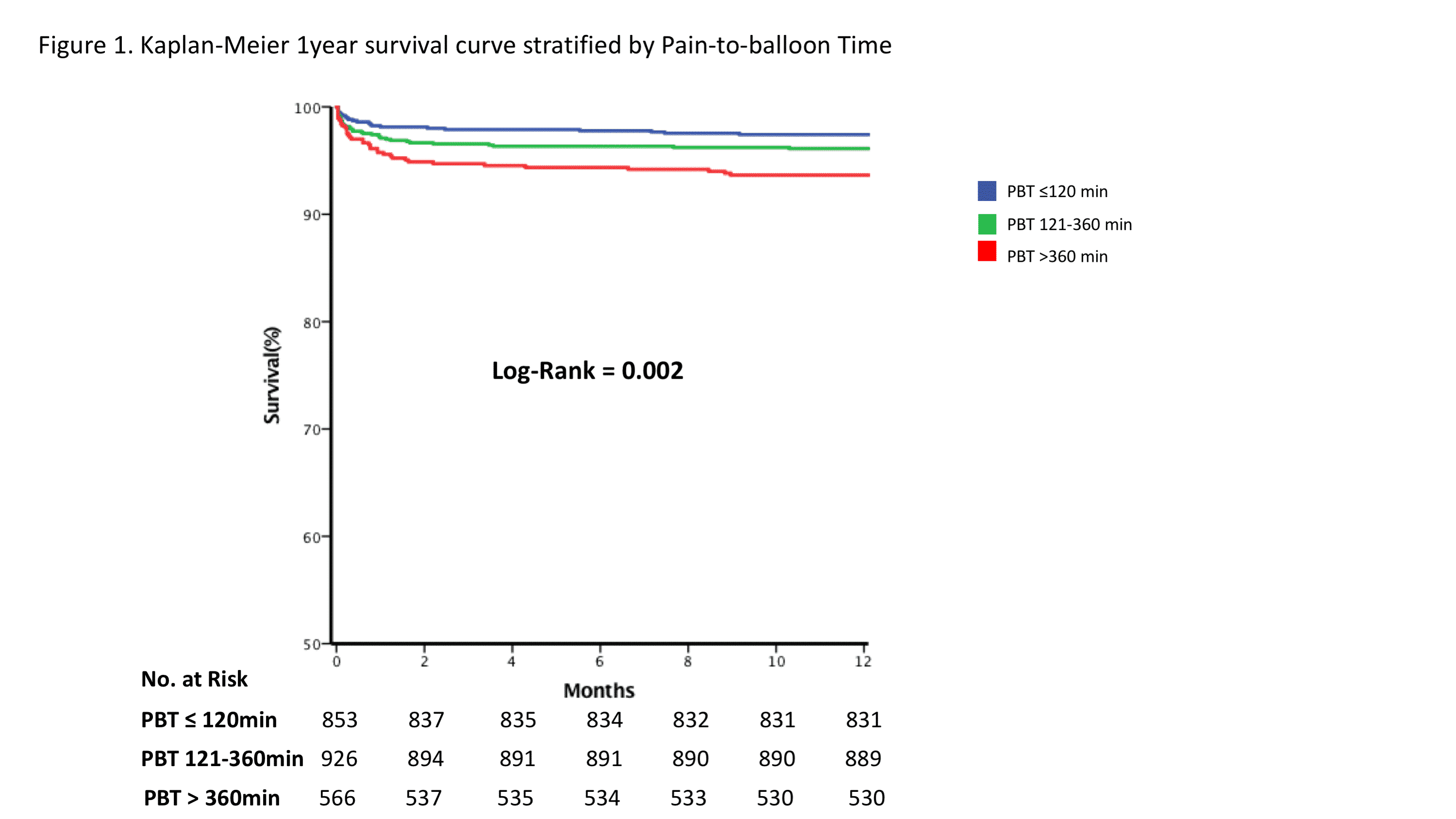
Relation of pain-to-balloon time and mortality among ST-segment elevation myocardial infarction patients undergoing percutaneous coronary intervention
Introduction: Limited and inconsistent data are present regarding the effect of the time span between symptom onset and balloon inflation (pain-to-balloon time -PBT) on clinical outcomes in ST-segment elevation myocardial infarction (STEMI) patients undergoing primary percutaneous coronary intervention (PCI). We aimed to investigate the possible influence of PBT on in-hospital outcomes and mortality in a large cohort of STEMI patients treated by primary PCI.
Material and Method: We retrospectively studied 2345 STEMI patients (age 61±13 years, 82% men) who underwent primary PCI. Patients were stratified according to PBT into 3 groups: ≤120 minutes, 121-360 minutes, and >360 minutes. Patients records were assessed for the occurrence of in-hospital complications, 30-day, and 1-year mortality.
Results and discussion: Of the 2345 study patients 36% had PBT time ≤120 minutes, 40% had PBT of 121-360 minutes and 24% had PBT time >360 minutes. Longer PBT was associated with lower left ventricular ejection fraction, higher incidence of in-hospital complications, and higher 30-day mortality (1.9% vs. 2.9% vs. 4.2%, p=0.03). There was a graded increase in mortality rates with longer PBT times (log-rank p= 0.002). In two multivariate cox regression models, a per-hour increase in PBT [HR 1.03 (95% CI 1.00-1.06), p = 0.039] as well as PBT > 360min [HR 1.6(95% CI 1.1-2.5), p = 0.04] were both independently associated with increased risk for 1-year mortality.
Conclusions: Although door-to-balloon time is a well-established clinical parameter among STEMI patients undergoing primary PCI, PBT time should also be considered a predictor for adverse outcomes.

Powered by Eventact EMS